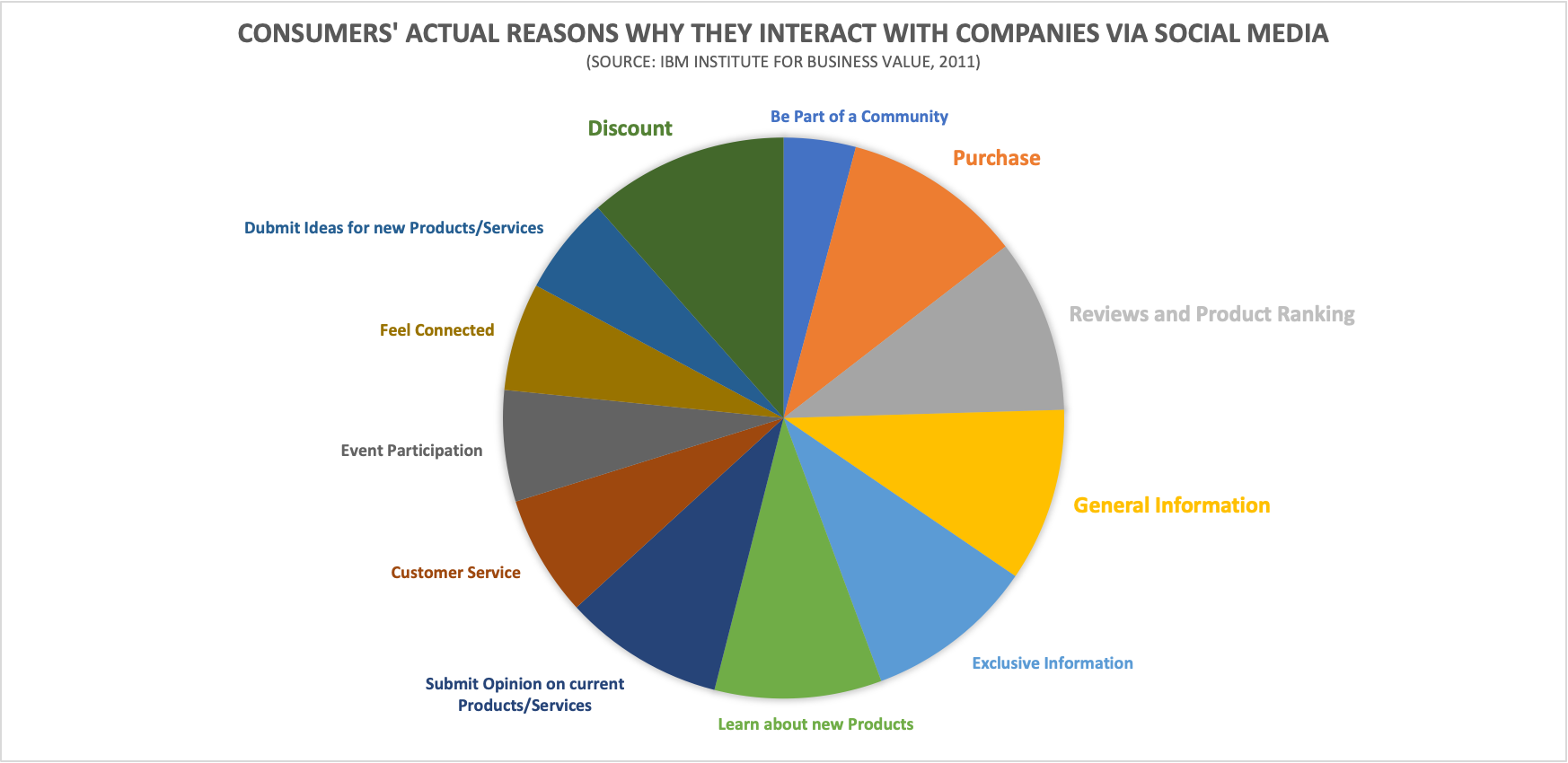Are you in the process of expanding your social media community and wondering what platforms and action points are available to help you get the most out of your company's reach? This guide will give you an overview of which social media platforms are suitable for which purpose, and how you should engage to get the most out of the different platforms. Are you ready to leverage your company's mission via social media?Introduction
This guide is designed to help organizations (for-profit or non-profit) that are trying to strengthen their brand awareness and build their own social media communities. We will discuss the benefits of creating and maintaining social media communities for the organizations’ various stakeholders, and also give an overview of the different platforms that organizations should explore to evaluate which channel suits the purpose and intention of the organization. Thereafter, we will also suggest the best practices of how each social media community group can be managed.
What do I get out of building a social media community?
You don’t use social media for your business yet? – you’re missing out on a fast, cheap, and effective way to reach your target audience. This is just as true for budding entrepreneurs as it is for NGOs. But what specific benefits can I get from using social media for my business?
Benefits for Budding Entrepreneurs
Is it also your goal to grow your business as quickly and effectively as possible in order to generate the maximum profit? Keep reading to understand how to enhance your reach on social media, grow your business, engage with your customers, and utilize the metrics for analyzing your social media metrics.
Support your brand building
- Create an account for your business, post content, and network to increase your brand awareness.
- Make real human connections by showing customers how they can benefit from your product/service.
- Use social media to give people insights and information about your company, for example about topics you will not find on the website or special customer requests.
Stimulate growth
- Increase your website traffic by linking them on your social media channels.
- Cooperate with influencers to expand the reach of your products and services.
- Boost sales by placing advertisements, linking your website, sharing information about the product, etc.
Develop your business
- Allowing your followers to give you feedback through your social media activities. This way you can constantly adapt your offer according to the wishes of your customers. You can realize this through live chats, polls, creating posts regarding this topic, etc.
Communicate with your customers
- Interact directly with customers and fans, and likewise, give them the chance to interact directly with your brand. For example take out some time to reply to DM’s or comments on the post.
- Keep customers up to date, especially in times of crisis but also as normal customer support to avoid damaging your reputation.
Gain insights into your costumers
- Learn more about your customers by finding out about their demographics, interests, and desires.
- Stay on top of industry news
- Keep an eye on the competition
Place advertising
- Use tracking tools like Facebook pixel, to see what customers have browsed for on your website and show them social media ads for the same products.
Prove the ROI
- It is always a challenge for marketers to prove a return on investment. But with social media tracking and analytics tools, you can see the full impact of your social media activities, from follows to engagements right through to purchases e.g. Google Analytics.
- Read through these Guides to find out more about the process and the benefits of Google Analytics.
Benefits for NGOs
As a director or employee of an NGO, it’s often not just about you making the people aware of your product/service, but raising awareness of a particular issue and supporting various communities. Read this section to learn how to adjust your social media performance to get perfect results.
Support your brand building
- Create an account for your business, post content, and network to increase your brand awareness.
- Make real human connections by showing customers how they can benefit from your product/service.
- Use social media to give people insights and information about your company, for example about topics you will not find on the website or special customer requests.
Support your Mission
- Use the reach of social media to share your mission with followers.
- Post content that stimulates discussion and contributes to social or societal change.
Boost growth
- Increase your website traffic by linking them on your social media channels.
Develop your business
- Allowing your followers to give you feedback through your social media activities. This way you can constantly adapt your offer according to the wishes of your customers. You can realize this through live chats, polls, creating posts regarding this topic, etc.
Communicate with your interested
- Interact directly with your target audience and likewise, give them the chance to interact directly with your brand. For example take out some time to reply to DM’s or comments on the post.
Gaining insights into your target audience
- Learn more about your customers by finding out about their demographics, interests, and desires.
- Stay on top of industry news
Which Social Media Platform fits my Company best?
Nowadays there are many social media platforms where you can present yourself and your business. LinkedIn and Facebook are the most common platforms for building a social media community for your business. Both groups’ options offer unique features and benefits – but which is the best to leverage for your business?
| Active Users | 57,5 million total users | Almost 3 billion active users |
| Target Audience | Focused on professional networking | Designed to facilitate personal connections (for everyone) |
| User Interface | Simple UI | More cluttered UI because of the greater functionality |
| Quality of Content | Focus on business-related topics, job offers, and expanding your professional network The danger of self-promoting posts | Content tends to be based on creating a discussion on a specific topic |
| Group Engagement | LinkedIn group members can post discussions, share photos and videos | Facebook group members can share photos, and videos, create events, host live webinars, tag other members, check-in, share how they feel |
| Group Administrative Tools | LinkedIn Group admins have the ability to create an application for pending group members. Once a member is added, LinkedIn admins are able to send group members messages and even emails | Facebook limits admins to just three, short questions |
| Group Conversations | Cost-Per-Click (CPC) = $6,5 | CPC = $2 |
Try to understand your Target Audience
Random acts of marketing will not get you far. That’s why it’s important to understand who your target audience is, what they want and how you can get to them. It also shows the importance on why you should also understand your Competitors on social media. The following questions will give you a guide to better put yourself in the shoes of your audience, in order to be able to implement their wishes perfectly.
Try to understand your Customers
- Who is your audience?
- What are their pain points?
- What does your product or service do to minimize or mitigate their pain?
- How can your product or service inspire and help them personally and professionally?
- How is your product or service positioned?
Try to understand your Competitors
- What is your competition up to?
- What’s your audience up to, both online and offline?
- How is your audience engaging with your competition?
- What is your competition doing that you aren’t?
- What type of response are your competitors receiving online and offline from your target audiences? Is it different than how your audience is engaging with you?
- Does your competition have a consistent tone, message, and brand? If not, how can you enhance yours to zoom faster?
- Is your competition engaging in a way their audience expects them to? Casual when they’re expecting a professional or the opposite?
- Why are they doing such things differently? Do they have a competitive differentiator because of this or do you have the leg-up? Remember, different isn’t always better. You may be on the right track.
- What are the weaknesses in how your competition is engaging and leveraging social media that you can use to your advantage?
Also always be aware of the different reasons why customers interact with companies via social sites vs. why businesses think customers follow them. It is important to have an overview of the members’ motives in order to be able to adapt the social media strategy in the best possible way.

How to Promote and Manage your Social Media Community?
Websites, Facebook, LinkedIn, … Do you ever wonder how to manage your social media community so that everyone gets value from it and you don’t lose track? The following section explains how to build and manage a social media community so that you can get the most out of the social media platforms for your business.
- Engage in more than one social media channel.
- Adding your website on your social media profile and vice versa, to channel your audience on both platforms.
- Evolve your content strategy over time, based on what’s going on in your industry, with your audience, and in the world around you.
- If possible, hire a community manager who’s responsible for the success of becoming a social business. This person should focus on social media engagement, which means he/she should plan and develop social media strategy that includes which platforms are used how and when. He should post content regularly, and respond to questions via social media.
- Create social media groups to expand your social media range and reach your target audience in a bundled way.
How to Promote a Social Media Group in particular?
Follow these steps to further increase not only your social media community in general, but your self-created groups to increase your brand awareness.
- Encourage group members to invite connections who would benefit from and contribute value to the group.
- Display the group on your personal account and website and encourage other members to do the same.
- Include the group link in your email signature.
- If you already have other accounts or groups on social media, share the group link with a brief summary of these.
- As new members join your group, welcome them by @mentioning their name, especially when your group is small and just beginning to grow.
- Ask new members to introduce themselves and tell the group what they hope to gain from the community.
How to Manage a Social Media Group?
Follow these steps to make your social media group stand out from the rest and add constructive value that will benefit your business and customers.
- Keep your customers informed by regularly updating information and communicating with them.
- Share your own content instead of retweeting. This can be done, for example, through stories that show how customers use your product or service. Always remember that customers are more interested in how the product is used than who is behind it.
- Review the information before retweeting or reposting it.
- Take advantage of photos and videos to create memorable community experiences.
- Post content that encourages discussion, makes customers think, and makes them want to respond.
- Review new content from other group members.
- Respond to questions on social media as quickly as possible.
- Accept new inquiries.
- Engage with spam.
- Stay true to your rules and the purpose of your group. Address criticism and rumors directly without sweeping them under the rug.
Additional Readings:
- Read this article to learn more about Facebook pixel and how it helps you to boost your sales.
- If you want to know more about the first steps to building a social media website, read this article.
- If you would like to learn more about the possible social media platforms, Oyava gives in this article a broader overview of the best social media platforms for your business in 2022.
- How to set up Google Ads and Conversion Tracking
- Guide to Google Ads
- How to List Your Business on Google
PS!
At FSI we’re always seeking to improve, so if you have any feedback on this guide/template, please do not hesitate to let us know.


